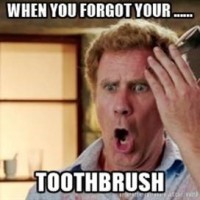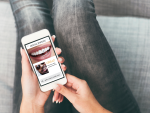
Nothing replaces proper brushing and flossing. But if you find yourself in a pinch with the need to scrub your chompers, here are 7 ways to do it sans toothbrush:
Find a soft cloth or paper towel The cloth or towel’s texture will help remove plaque and bacteria from your teeth and surrounding gum tissue. Use short, back-and-forth motions and cover all surfaces of your teeth: cheek side, tongue side and biting surfaces.
Use your finger and some toothpaste If you don’t have a cloth or paper towel handy but do have access to toothpaste, use your finger to apply it to all surfaces of your teeth. Your finger doesn’t provide a rough enough surface to mechanically remove plaque and bacteria, but the fluoride in the toothpaste will help buffer acids and prevent decay until you can get to your brush.
Swish and rinse with water Swishing and rinsing your mouth with water helps reduce bacteria around your teeth and in your mouth. Swish-and-rinse will also remove some of the food particles and sugary residue left on your teeth after eating.
Floss If you’re traveling without a brush but remembered to bring your floss, use it! Forty percent of a tooth’s surface meets up with another tooth, creating the space between the teeth. When you clean these spaces, you are cleaning almost half of the total tooth surface area in your mouth. (This is also why flossing regularly is so important!)
Eat Believe it or not, the act of chewing and eating food helps keep our teeth bright! Chewing food produces saliva in our mouths, which not only helps break down food to be absorbed in the body, but also buffers acid and carries minerals that help rebuild the enamel surfaces of teeth. Foods that are especially good at cleaning teeth include apples, carrots and celery. (An added bonus with celery – the “strings” on the stalk often slide between teeth when it’s eaten, acting as floss!)
Chew gum Researchers in this study recently discovered that chewing one piece of gum can trap up to 100 million bacteria, about 10 percent of the total bacteria in your mouth. Chewing gum also stimulates saliva production, which helps cleanse teeth.
Make a chewing stick If all else fails, grab a stick. Use a knife or your fingernail to peel back the outer layers of bark and then bite the end of the stick repeatedly, creating a frayed end. Use the makeshift “toothbrush” to remove plaque and food debris with short up and down motions near the gumline.






